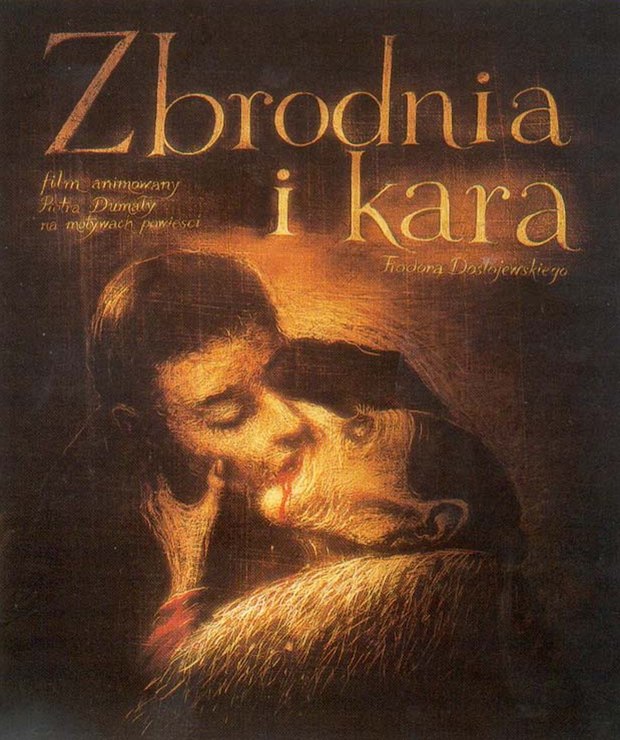Every Thursday, Chris Robinson takes a look at films from animation’s past. This week's screening: Piotr Dumala's unique adaptation of Crime and Punishment (2000).
Piotr Dumala's take on Crime and Punishment (2000) opens with a marvelous Saul Bass inspired credit sequence. Thumping, repetitive piano notes accompany the reddish brown visuals that appear in and out of shadows. In between, we see what is almost an overture of images (including the murder) revealing in an almost Brechtian style what exactly we can expect to see in this film. The fusion of red and brown throughout the film captures the violence and griminess of this sick world, while the elliptical, paranoid, dimly lit images perfectly capture the increasingly blurred line of dream and reality in Raskolnikov's disturbed mind. As with the novel, the crime is very much an afterthought. What interests Dumala is less the crime and more the emotional and mental state of this troubled soul before and after the murder. This is not Dostoevsky's Crime and Punishment and nor should it be. Adaptations, like essays, should attempt to be personal re-creations of the feelings inspired by the adapted work.
Dumala was criticized (though not to the degree he was for his widely misunderstood film, Hipoppotamy) at the time for his apparently unfaithful translation. "People wanted a standard adaptation. People expect to see what they read in the book. This is something else so they feel cheated. It was not my aim to copy the book. I was really close to the book. I took one level of the book. It's not possible to show everything from this book. I got what I wanted." Dumala's film takes only the main plots: the killings and meeting Sonia. This is not a tale of evil or the like in St. Petersburg. "This is about love and how obsession can destroy love. In our life we are under two opposite influences to be good or bad and to love or hate."








